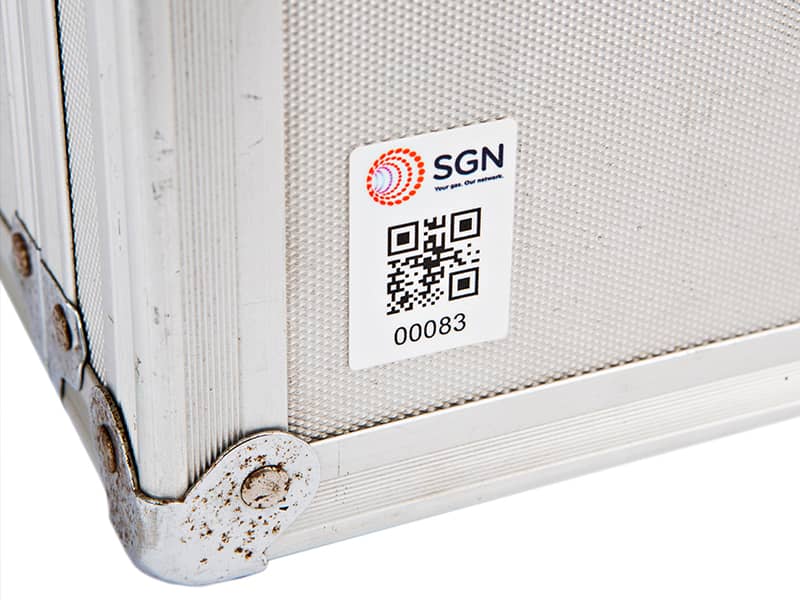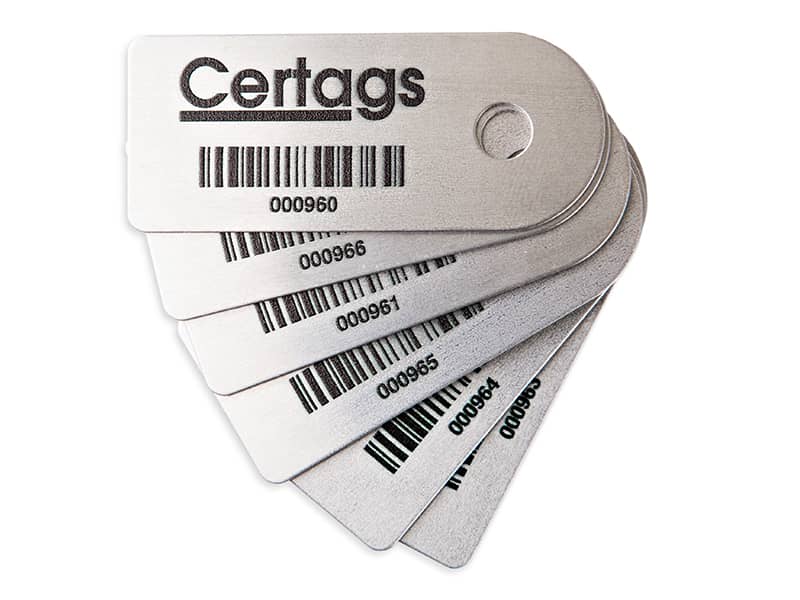5 important facts you should know about Asset Identification
Table of Contents
What is asset identification?
6 benefits of asset identification
What are the most popular methods to identify assets?
Which industries require asset identification?
How do I choose the right asset identification tag?
What is asset identification?
Asset Identification is the process of identifying and classifying critical assets within an organisation.
The primary purpose of asset identification and classification is to protect the business from possible threats such as loss, theft, compliance issues as well as asset underperformance and related consequences. Only after knowing the exact specifications of the company assets is it possible to put in place appropriate asset identification solutions.
Every business should consider and implement asset tagging as the first step of a comprehensive asset tracking system to cut unnecessary costs and improve overall productivity and accuracy within the organisation. Asset Identification is usually conducted by utilising known information and unique asset identifiers to track their status, location, need for maintenance, and to monitor impact on a business.
6 Benefits of asset identification
- Real-time physical verification and location: accurately locate your asset in real-time and eliminate theft, loss and ghost assets.
- Real-time and quick access to asset information: simplify asset scanning and counting for improved productivity and regulatory compliance through detailed asset reporting and auditing.
- Tracking of asset maintenance and status: keep track and easily schedule maintenance for all assets that are critical to maintaining business operation.
- Increased efficiency and reduced costs: avoid unplanned breakdowns, thefts, lost assets, unused assets and increase asset usability.
- Reduced errors: help reduce errors by eliminating the need to manually track and log asset information
- Time-saving process: drastically cut down time spent looking for things.


What are the most popular methods to identify assets?
As part of an asset tracking system, businesses can decide between different methods, materials, and technology to conduct their asset identification routine.
Asset tags and labels are usually utilised by many businesses to identify and track tangible assets such as pieces of equipment, tools, machinery, and hardware that are essential for the business.
Asset tags and labels should be customised depending on the asset specifications and can be printed on a variety of materials including PVC, metal, and aluminium to suit the overall management system.
Modern technologies available to help track tagged assets
- QR codes: were first used in the automotive industry but they are now used in a variety of industries for their usage simplicity and affordable price. QR Codes can be scanned by using a reader or the camera of the phone and will instantly provide information about asset specification and status. They are bi-dimensional which means they can be scanned in different directions.
Suitable for: a wide variety of businesses; they are an effective way to quickly share business information, expand networking, connect online and offline media, drive new traffic to the website and boost the effectiveness of marketing activities.
- Barcode labels and tags are, similar to QR Codes, are affordable, easy to use and can be utilised by many industries for their versatility and customisation.
Although they present many similarities with QR Codes, barcodes can hold fewer amounts of data. Barcodes are mono-dimensional which means they can’t be scanned in any direction.
Suitable for: businesses who use manual and time-consuming processes and want an affordable solution to track their inventory and assets, improving cash flow and reducing errors.
- RFID Tags and labels are a more expensive asset identification solution as they contain an internal electronic device and a chip used to identify the asset. One of the major differences with the previous two is that they are three-dimensional, and they use waves to transmit the information to the reader. Consequently, the scanner does not need to get close to the tag to have the information transmitted to it.
Suitable for: although they use a more expensive technology, RFID tags can provide a better ROI to certain businesses as they can be encrypted and provide a higher level of security, store much more data and they can be read in bulk, rather than one at a time like the previous two technologies.
Which industries require asset identification?
Generally speaking, any industry that handles assets or high-valuable inventory could benefit from starting to identify and track their assets, although industries with critically supportive assets could benefit the most.
Below is a list of industries in which asset identification has historically improved efficiency:
- Manufacturing and Construction
- Healthcare
- Mining and Metals
- Aerospace and Defence
- Oil and Gas
- Utilities


How do I choose the right asset identification tag?
It can be difficult to find the right asset identification method if we are not familiar with the modern technologies available. Choosing the wrong tagging solution or wrong material could result in information loss or tags not being suitable in a specific workplace environment.
Therefore, quality, durability and technology are the key features to consider when choosing the right tagging option.
For example, indoor assets like computers and printers will not need an asset identification method as durable as what is needed for outdoor equipment, while items with a high theft rate will need to use tamper-evident tags and advanced technology such as RFID.
Choice of material also varies a lot depending on the environmental condition, weather conditions, exposure, and asset usage.
Some businesses may opt for pre-printed tags and labels, while others might need their tags customised with specific information. At times, an effective in-house printing system (internal link) could be a more affordable and efficient option.
Custom Asset Management Tagging Solutions


Our team are experts in choosing suitable asset identification and tracking options for your specific application and environment. We are happy to advise and recommend the most efficient and cost-effective asset identification solutions for your workplace.
No matter the industry, Certags can provide a wide range of asset identification tags and label solutions that can be entirely customised according to your business needs.

